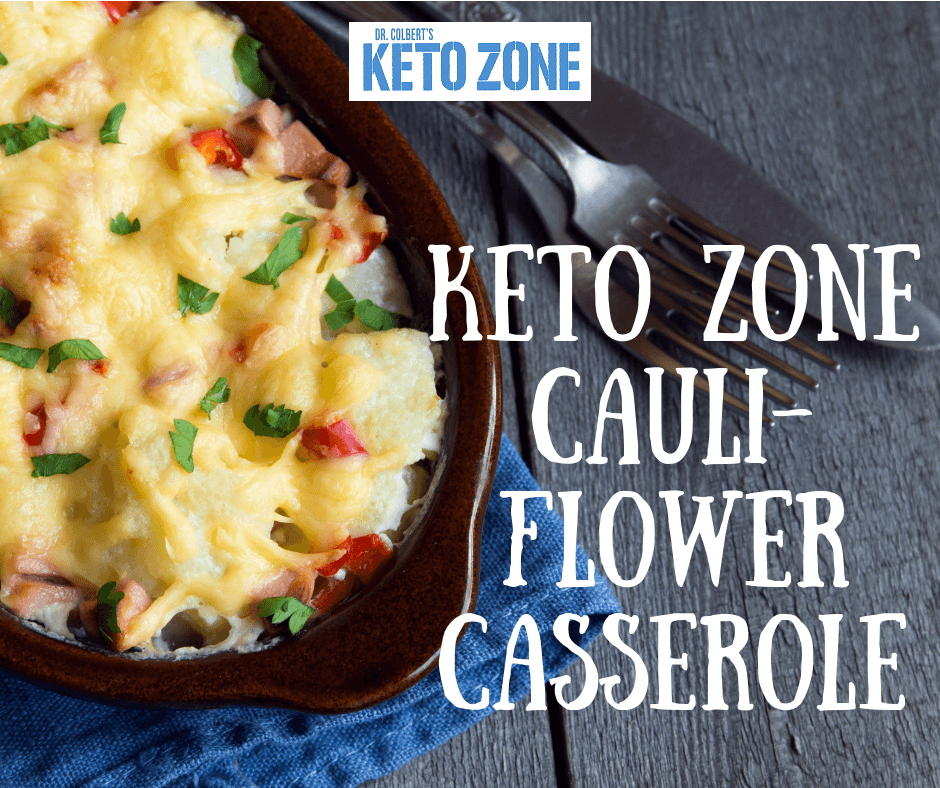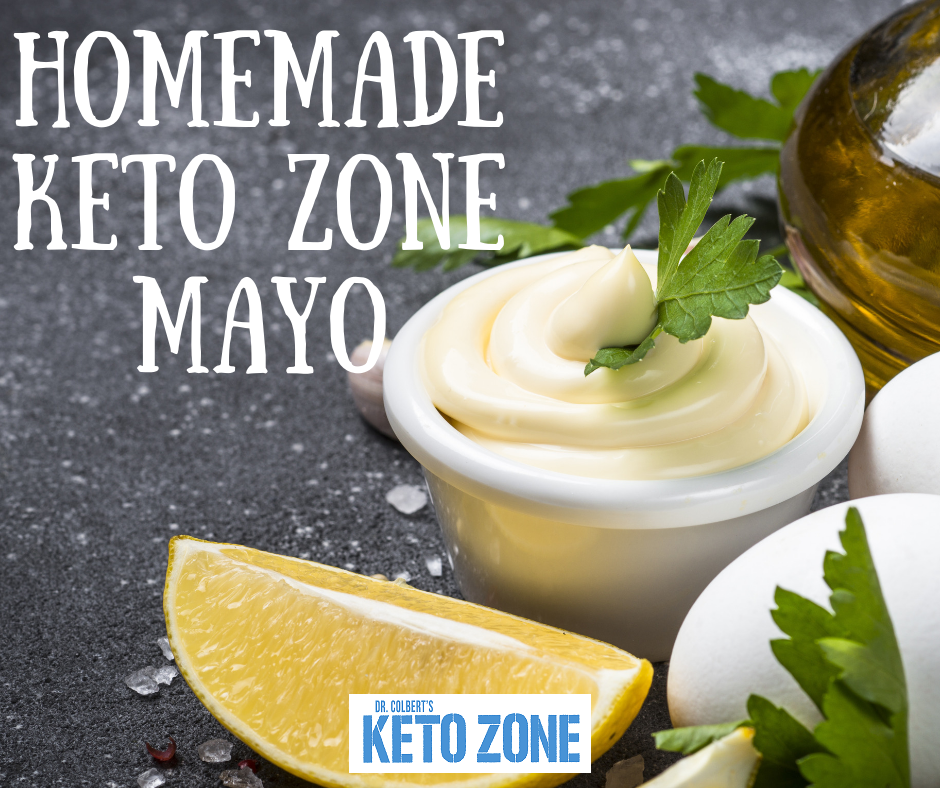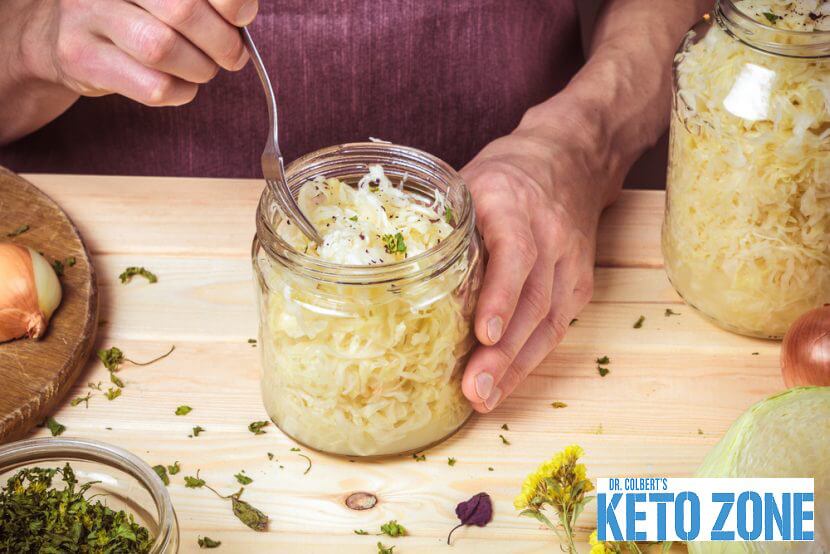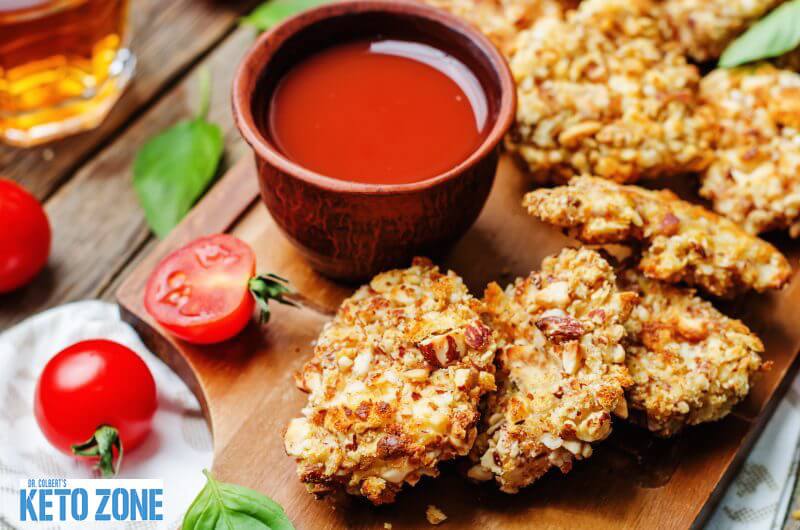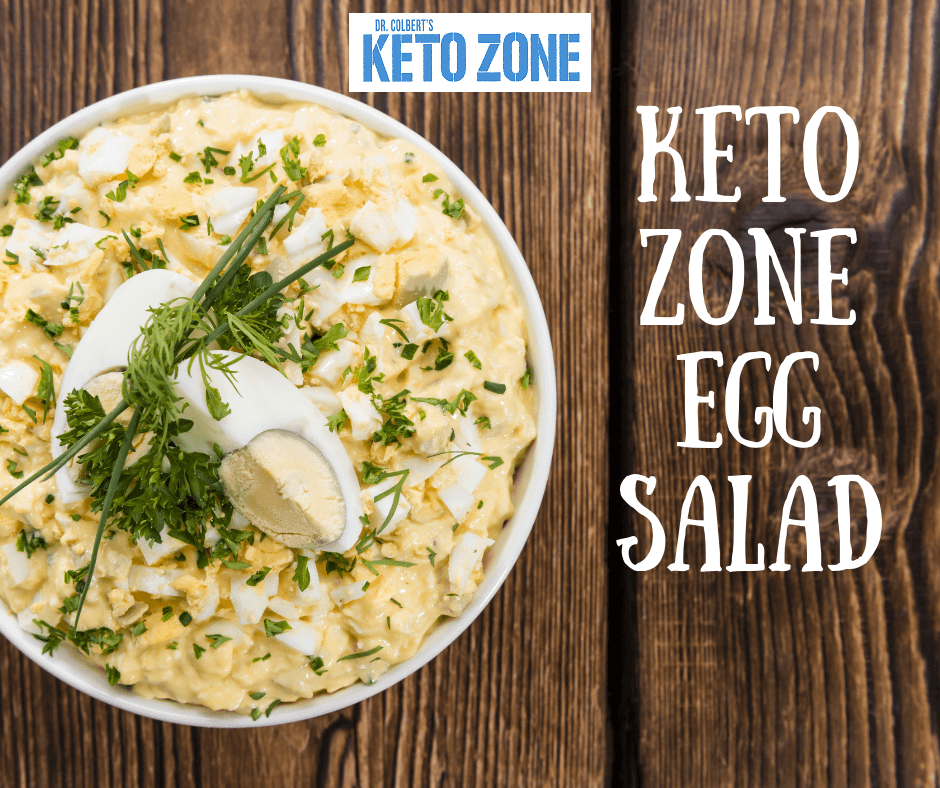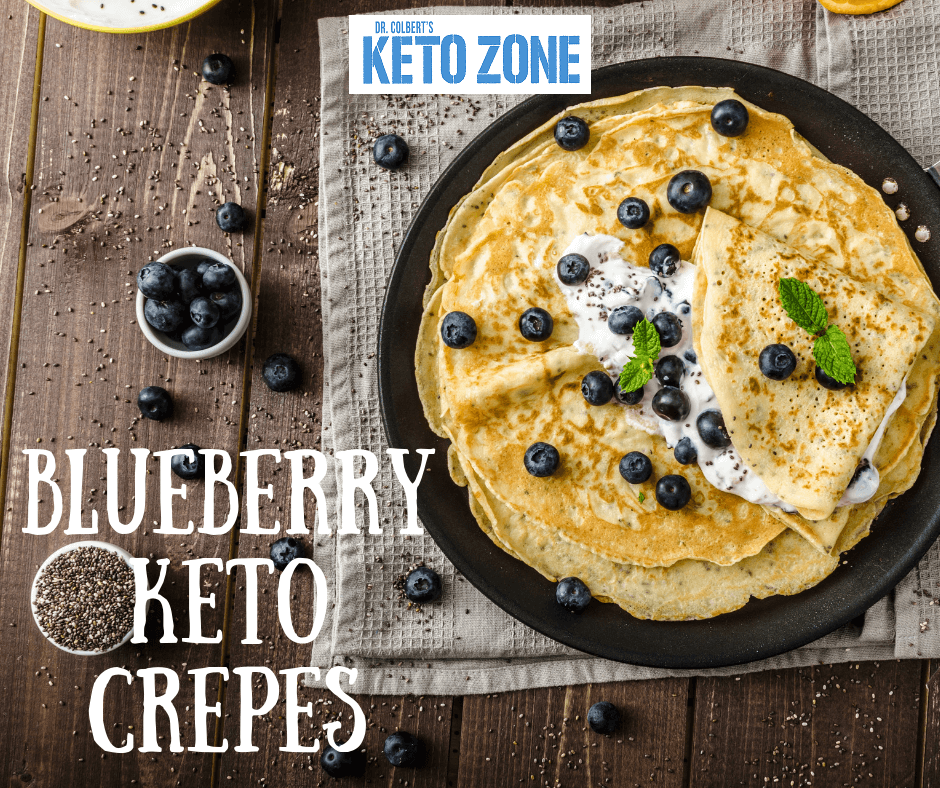Homemade Keto Zone Mayonnaise
Mayonnaise is an incredibly delicious and versatile Keto Zone condiment! It can be used in great keto recipes such as chicken salad and deviled eggs.
Unfortunately, most commercial mayonnaise products are not Keto Zone friendly. This is because they are made with low-quality rancid oils such as soy, canola, safflower, and vegetable oil. These oils are oxidized and have been shown to cause inflammation, weight gain, and even heart disease.
That is why we are sharing this easy and healthy Keto Zone mayo recipe made with avocado oil! Avocado oil is loaded with heart-healthy monounsaturated fatty acids. Additionally, this recipe is made with egg yolk which is abundant with fat-soluble vitamins and minerals.
In order to avoid ending up with watery mayo, make sure to follow the directions in this recipe carefully. You want to slowly add in the avocado oil as the food processor mixes the mayonnaise. This will ensure you end up with a creamy and delicious mayonnaise.
You might not ever want store-bought mayo again!
Keto Zone Chocolate Hazelnut Spread
Chocolate and hazelnuts are quite a tasty combination!
That is why there are so many popular chocolate hazelnut spread products on the market.
The problem is that most commercial chocolate hazelnut spread products contain inflammatory ingredients such as added sugars, oxidized oils, and questionable preservatives.
But what if you could enjoy the delicious flavor and satisfaction of your favorite chocolate hazelnut spread product without the inflammatory added ingredients?
Well you can with this creamy keto chocolate hazelnut spread!
That’s right, you can indulge in this decadent treat while still keeping carbs low and burning fat in the Keto Zone!
How Obesity Causes Inflammation In The Body & How To Reduce It
We all have immune cells in our bodies that are meant to maintain health. But what if those cells start doing the opposite, leading to disease and inflammation in the body? Let’s look at the connection, why this can happen, and what we can do about it.
THE OBESITY AND INFLAMMATION CONNECTION
Everyone has immune cells in our fat tissues called adipose tissue macrophages, or ATMs.
In lean tissues, these cells maintain health and balance in the body. But in an obese body, the cells can become harmful, causing bad inflammation and insulin resistance.
In a recent study at the University of Virginia Health System, researchers were finally able to explain why these cells can become damaging [1]:
- Harmful free radicals in our bodies can react with substances called lipids inside fat tissues.
- This is known as lipid oxidation. And when it happens, the lipids produced an immune response leading to inflammation.
- Sometimes, these oxidized lipids reprogram immune cells to become abnormally active, spurring bad inflammation in the body.
Researchers found the bad inflammation happened when longer, “full-length” oxidized lipids were present versus shorter ones in healthy tissues. When they compared obese tissue with healthy tissue, they found higher ratios of longer lipids in the obese tissue.
It’s believed these longer lipids are responsible for inflammation that causes diseases connected with obesity, such as diabetes. Plus, research shows long-term inflammation is also a big risk factor for diseases like cancer, cardiovascular disease, and metabolic syndrome [2].
HOW TO REDUCE INFLAMMATION IN THE BODY
Some inflammation in the body is normal, since it’s an immune response and you need healthy immunity to stay healthy.
But we want to reduce the bad, disease-causing inflammation in the body and brain. Here are some natural ways to help reduce it.
LOSE WEIGHT HEALTHFULLY
Since we know obese tissues tend to contain more inflammation-causing substances—and long-term inflammation is bad for health—weight loss is the most natural, direct way to reduce disease risks and address weight-related health concerns.
(The Keto Zone diet is a fantastic solution for fast weight loss because it’s fat-burning, low-carb, and anti-inflammatory.)
EAT ANTI-INFLAMMATORY FOODS
Load up on foods that help fight inflammation, including:
- Leafy greens vegetables like kale, collards, bok choy, and spinach
- Fatty fish like salmon, sardines, tuna, and mackerel
- Healthy oils like extra virgin or virgin olive oil, coconut oil, and MCT oil
- Nuts and seeds like walnuts, almonds, and flax seeds
- Berries like blueberries, blackberries, strawberries, and raspberries
- Anti-inflammatory herbs and spices like turmeric, ginger, and rosemary
And as much as possible, focus on organic, grass-fed meat and dairy options.
On the flipside, be sure to avoid foods that cause inflammation like sugars, refined grains, processed oils, and packaged foods.
REPLACE BAD HABITS WITH GOOD ONES
Smoking, avoiding exercise, and having fast food for dinner are all lifestyle choices that contribute to disease and inflammation in the body. See where you can replace each bad habit with a healthier one, like going for a walk and finding easy keto recipes to make.
REDUCE STRESS AND STAY CONNECTED
Don’t underestimate the detrimental effect of stress on your health! While we can’t avoid stress completely, taking time to unwind and do activities you enjoy can help relieve stress and anxiety.
Also, make time for important relationships to avoid unhealthy levels of loneliness. Stay connected with friends, family, and God to deepen the richness of life. Love, laugh, and spend time with others away from social media.
Sources:
Decadent Keto Chocolate Cake
No, you’re not dreaming!
You really can have chocolate cake on a keto diet.
Gluten-free, dairy-free, sugar-free, and still delicious, this keto cake is almost too good to be true.
There is no reason to deprive yourself while on the Keto Zone Diet. Even the most decadent foods can be made keto friendly.
On keto, you can eat your cake and still lose weight!
Slow Cooker Keto Chilli
What could be better than a delicious, hearty, and satisfying dinner waiting for you at the end of a busy and hectic day?
With this slow cooker chili, all the hard work is done ahead of time so that at the end of the day all you have to do is get out a bowl and get ready to eat!
Ground beef is replaced with cubed steak for a more gourmet feel to this meal. The steak will get so tender that it will basically melt in your mouth.
Ingredients
2 1/2 pounds grass-fed steak, cut into 1-inch cubes
1 tablespoon organic chili powder
1/2 teaspoon organic ground cumin
1/2 teaspoon sea salt
1/4 teaspoon organic ground cayenne pepper
1 teaspoon organic ground black pepper
1/2 cup organic sliced leeks
2 cups organic canned tomatoes, whole with juice
1 cup organic chicken or beef stock
Instructions
1. Place all ingredients in the slow cooker.
2. Stir, cover, and set the slow cooker to high.
3. Cook for about 6 hours, or until the steak is tender.
4. Use a fork to shred some of the steak cubes if and break up any tomatoes that remain intact.
5. Serve the chili hot in bowls with any desired toppings (grass-fed cheese, sour cream, avocado, chopped cilantro, etc.)
How did your chili turn out? Let us know in the comments below!
Easy Keto Zone Sauerkraut
Do you get enough probiotics on the Keto Zone Diet?
Probiotics are healthy bacteria that reside in your large intestine and help you break down food, modulate the immune system, and regulate your neurochemistry. The community of bacteria in your body is referred to as the microbiome.
These bacteria are so important that many people regularly supplement with probiotics in order to keep the microbiome healthy.
But this is nothing new!
People have been getting probiotic bacteria through eating fermented food for many generations. Fermentation is a traditional preservation method used to store perishable vegetables after the growing season for consumption throughout the winter.
One of the most common fermented foods is sauerkraut. You can find many brands of sauerkraut in grocery stores everywhere. However, the unfortunate truth is most of these commercial sauerkrauts have been pasteurized which removes the beneficial probiotic bacteria.
That is why we are sharing this simple sauerkraut recipe. It can be made at home with only 2 ingredients so you can get all of the great benefits of probiotics!
INGREDIENTS
5 pounds organic green cabbage
3 tablespoons sea salt
INSTRUCTIONS
- Start by cleaning your supplies! Since this is a fermentation project, we want to sanitize everything to be sure that we only grow healthy probiotic bacteria!
- You will need a large bowl, 5-6 quart glass mason jar (or multiple smaller jars), and a spoon. Wash them thoroughly making sure no soapy residue remains that may kill your probiotic bacteria.
- Remove the tough outer layers of your cabbage and set aside.
- Remove another 4-6 leaves of cabbage and set aside for later.
- Slice 1/3 of your cabbage in to thin slices and place in a large bowl.
- Add 1 tablespoon of salt to the bowl and begin to knead the cabbage with your (clean) hands until it begins to release moisture.
- Slice the next 1/3 of your cabbage and add to the bowl.
- Add another tablespoon of salt and knead until moisture begins to release.
- Finish slicing the final 1/3 of cabbage and repeat.
- Continue to knead the cabbage until a salt brine begins to form in the bowl.
- Now you can transfer your sauerkraut in to your jar(s).
- Use a spoon to firmly pack the cabbage in to jar until the brine covers the cabbage, add a small amount of spring water and some extra salt if necessary to submerge the cabbage.
- Take the cabbage leaves you set aside and fold them so that they fit in to the mouth of the jar.
- Stack folded cabbage leaves on top of the sauerkraut to ensure that the shredded cabbage remains submerged under the brine.
- This is important because sauerkraut relies on anaerobic fermentation which means that no oxygen can be present.
- Cover the jar and place in a cool dark cupboard or closet to ferment for 2-3 weeks.
- Check your sauerkraut every few days to make sure the cabbage is still submerged in the brine. If not, open the jar and firmly press the cabbage back down and add more salt water if necessary.
- Once the sauerkraut has finished fermenting it can be refrigerated for up to 6 months.
- Enjoy!
NUTRITION FACTS
Serving Size: 1/4 cup
Per serving:
Calories: 14 kcal
Fat: 0 g
Total Carbs: 3 g
Fiber: 2 g
Net Carbs: 1 g
Protein: 1 g
Easy Crispy Keto Chicken Tenders
Does your family love chicken tenders?
If so, making a delicious family-friendly Keto Zone meal just got easier!
This recipe is a great alternative to conventional fried chicken tenders.
Fried foods are strictly avoided on healthy ketogenic diet. When most oils are heated to high temperatures they begin to oxidize and go rancid.
That is why this recipe is oven-baked so you can avoid the dangerous oxidation of oils caused by frying foods.
Most conventional chicken tenders are also breaded with inflammatory and carb heavy wheat flour.
These chicken tenders, on the other hand, are made with organic coconut flakes and chopped almonds, so they have both nutrition and flavor without added carbs!
Try out this crispy keto chicken tenders recipe today! It is sure to be a new family favorite.
INGREDIENTS
1 1/2 pounds organic boneless skinless chicken thighs
2 organic/free-range eggs, beaten
1/4 cup organic coconut flour
1/4 cup organic coconut flakes
1/4 cup organic almonds, finely chopped
2 teaspoons organic olive oil
1/2 teaspoon sea salt
1/4 teaspoon organic black pepper
1/4 teaspoon organic garlic powder
1/8 teaspoon organic onion powder
INSTRUCTIONS
- Preheat the oven to 400 F.
- Finely chop almonds.
- In a small bowl beat eggs until yolks and whites are well combined.
- In a large mixing bowl, combine almonds, coconut flakes, coconut flour, garlic powder, onion powder, sea salt, and black pepper.
- Place a wire rack on a baking tray and oil wire rack with olive oil.
- Lay chicken thighs out on a cutting board and cut in to 8 strips.
- Dip each chicken in the beaten eggs and then cover in spice and flour mixture.
- Lay chicken strips out on the wire rack.
- Bake for 20 minutes or until golden brown and crispy.
- Remove chicken strips from oven and allow to cool for 5 minutes.
- Serve and enjoy!
NUTRITION FACTS
Servings: 4
Serving size: 2 pieces
Per Serving:
Calories: 300 kcal
Fat: 12 g
Total Carbohydrates: 5 g
Fiber: 3 g
Net Carbs: 2 g
Protein: 40 g
Keto Zone Egg Salad
This low-carb egg salad is a delicious and versatile Keto Zone recipe that is loaded with with nutrition and flavor!
Organic pasture-raised eggs provide a healthy dose of bioavailable protein as well as healthy fats, vitamins, and minerals.
With sauerkraut added for extra flavor and nutrition, this recipe is loaded with probiotics to boost your gut health and digestion.
Perfect for breakfast, lunch, dinner, or a snack, this recipe is great any time of day!
Keto Zone Crepes with Blueberries and Cream
Are you craving a new delicious Keto Zone breakfast option?
These low-carb blueberry crepes are sure to satisfy your needs!
Made with organic cream cheese and pasture-raised eggs, you can be sure these crepes are grain-free, gluten-free, and flourless!
This recipe provides plenty of healthy fats and just the right amount of protein without extra carbs so you can keep burning fat in the Keto Zone.
And not only is this recipe tasty and nutritious, but it is very versatile as well!
You can use the same basic crepe recipe minus the stevia to make savory crepes as well. They can even be used as a great low-carb tortilla!
